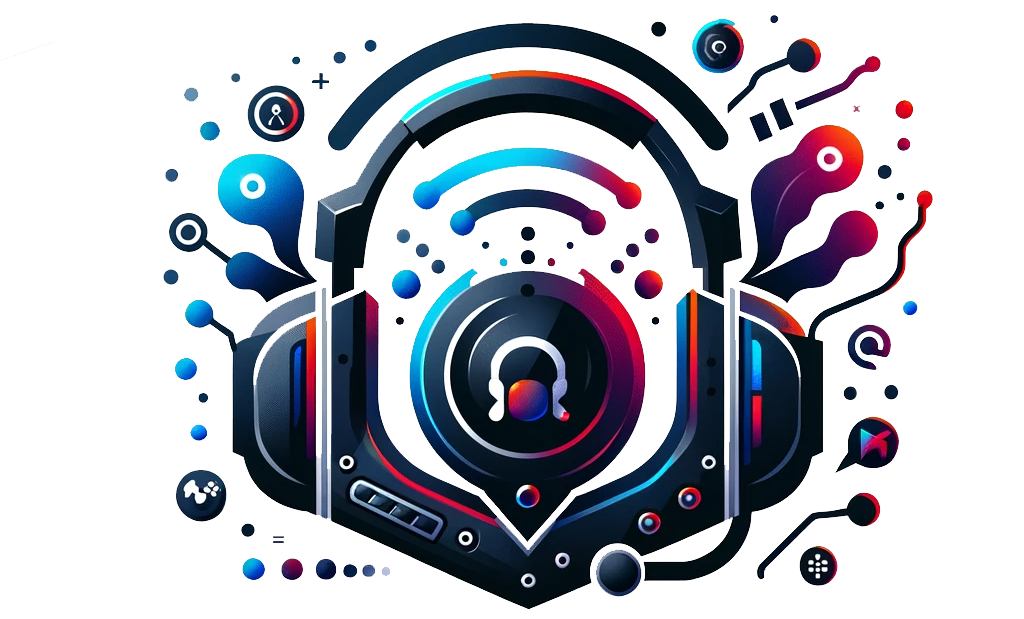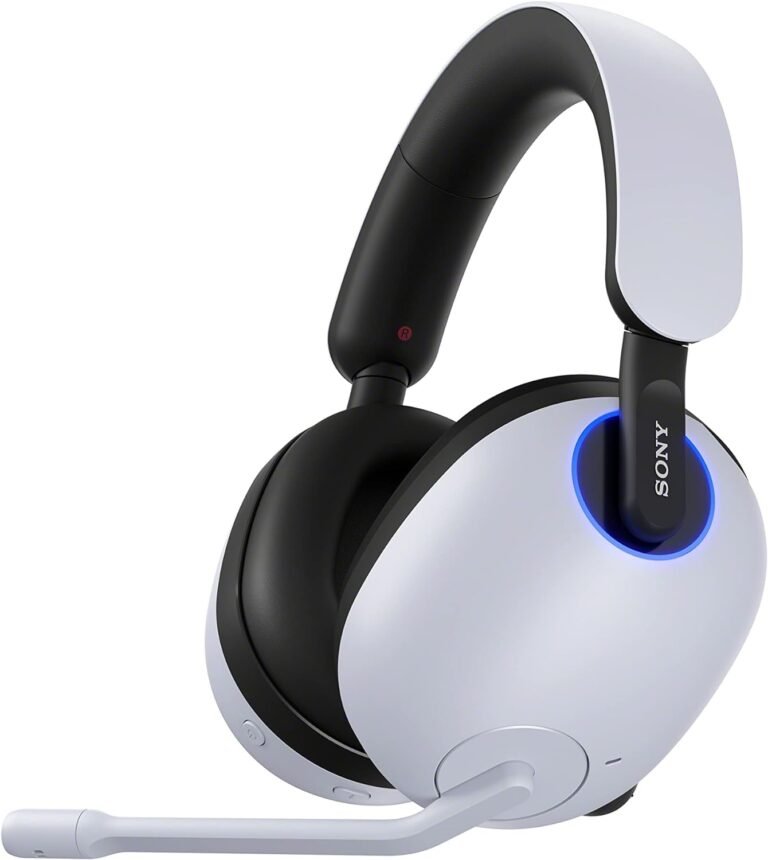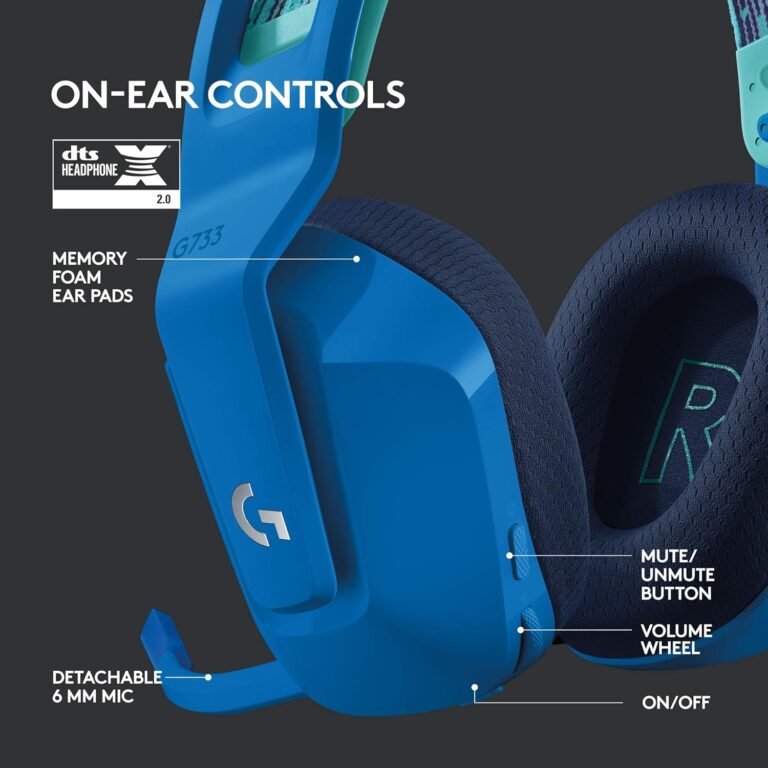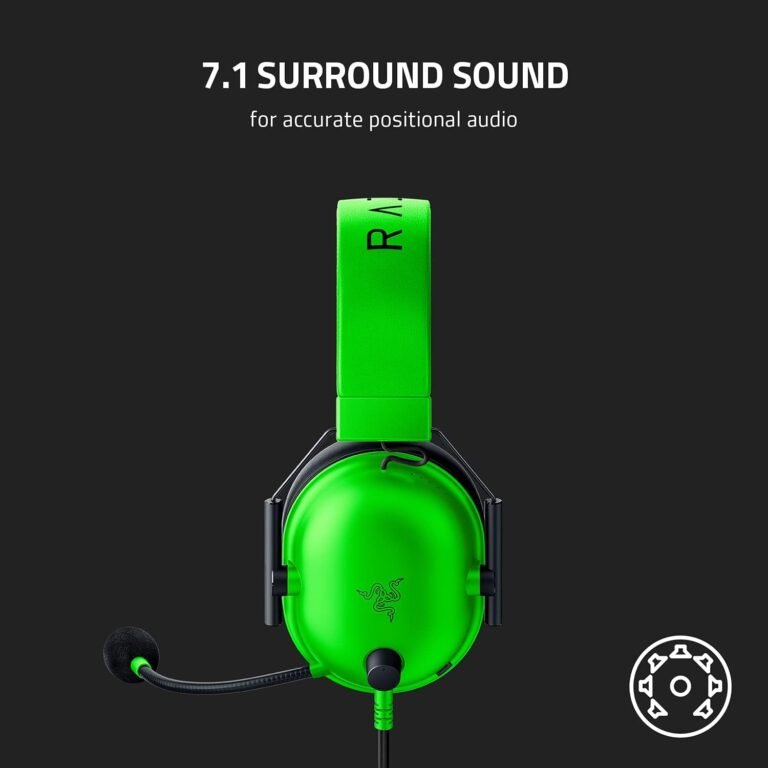Are you someone who enjoys spending endless hours immersed in the world of gaming? If so, then you are probably in need of a reliable and high-quality audio setup to enhance your gaming experience. But with so many options out there, it can be overwhelming to choose between gaming headsets and regular headphones. That’s why we’ve compiled this article to help you understand the distinctions between the two, so you can make an informed decision that best suits your gaming needs.
Physical Design
Earcup Design
The earcup design of a headset plays a crucial role in providing comfort and sound isolation. Gaming headsets often come with large and over-ear earcups, which completely cover your ears. These earcups are designed to create a seal around your ears, effectively isolating external sounds and enhancing the gaming experience. Regular headphones, on the other hand, may have smaller or on-ear earcups, which may not provide the same level of noise isolation or comfort during long gaming sessions.
Headband Design
The headband design of a headset is important for distributing the weight of the headphones evenly across your head. Gaming headsets typically have a sturdy and adjustable headband design that can easily accommodate different head sizes. This ensures a secure and comfortable fit, even during intense gaming sessions that last for hours. In contrast, regular headphones may have less adjustable headbands, making it difficult to find the perfect fit for your head.
Microphone
One of the primary differentiators between gaming headsets and regular headphones is the presence of a built-in microphone. Gaming headsets are specifically designed to allow seamless communication with other players during online gaming sessions. They usually feature a flexible boom microphone that can be adjusted to the desired position and delivers clear and accurate voice transmission. Regular headphones, however, do not typically come with a microphone, as they are primarily intended for music listening.
Cable Length
The cable length of a headset is an important consideration, especially if you prefer wired connections. Gaming headsets often come with longer cables, giving you the freedom to move around without being restricted by cable length. This is particularly useful if you like to sit at a distance from your gaming console or PC tower. Regular headphones, on the other hand, may have shorter cables, as they are primarily intended for stationary use.
Audio Quality
Soundstage
Soundstage refers to the perceived spatial quality of audio in a headset. Gaming headsets are often designed with a wider soundstage, allowing for a more immersive gaming experience. With a wider soundstage, you can accurately locate and distinguish sounds coming from different directions, enhancing your ability to pinpoint enemy footsteps or gunfire in games. Regular headphones may have a narrower soundstage, as they are primarily designed for music listening where a more intimate and focused audio experience is desired.
Frequency Response
The frequency response of a headset refers to its ability to reproduce a wide range of audio frequencies. Gaming headsets are typically engineered to emphasize the frequencies that are most important for gaming, such as mid-range and high-frequency sounds. This helps in providing clear and detailed in-game audio, ensuring that you don’t miss any important sound cues. Regular headphones, on the other hand, may have a more balanced frequency response that caters to a wider range of music genres.
Bass Response
Bass response is an important aspect of audio quality, especially when it comes to gaming and music with heavy bass elements. Gaming headsets often prioritize a deep and punchy bass response, enhancing the impact of explosions, gunshots, and other low-frequency sounds in games. Regular headphones may also have a good bass response, but they may not be specifically optimized for gaming and may not deliver the same level of thumping bass that gaming headsets can offer.
Surround Sound
Surround sound is a feature that can greatly enhance the gaming experience, providing more accurate audio positioning and creating a more immersive environment. Many gaming headsets come with built-in virtual surround sound technologies, such as Dolby Atmos or DTS Headphone:X, which simulate a multi-channel audio experience. This can give you a competitive edge in games, allowing you to detect the direction of sounds with precision. Regular headphones generally do not have built-in surround sound capabilities, as they are not primarily designed for gaming.
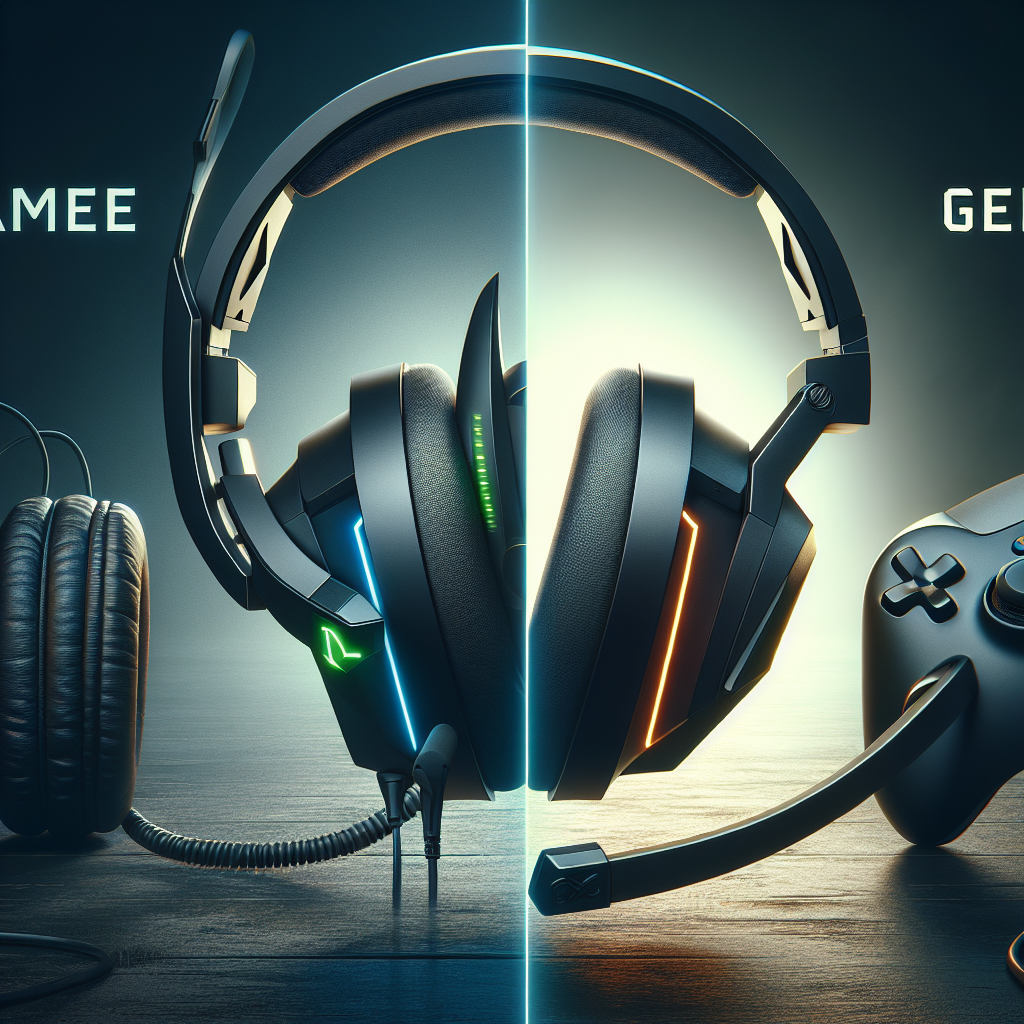
Connectivity Options
Wired Connection
Both gaming headsets and regular headphones offer the option of a wired connection. A wired connection ensures a consistent and uninterrupted audio signal, making it ideal for competitive gaming or situations where wireless interference may be a concern. Gaming headsets usually come with detachable or braided cables, providing durability and convenience for storage and travel. Regular headphones may also offer detachable cables, but they may not be as durable or designed specifically for gaming purposes.
Wireless Connection
Wireless connectivity is a popular feature in gaming headsets and regular headphones alike. Wireless headsets offer freedom of movement without the hassle of tangled cables. Gaming headsets often come with specialized wireless technologies designed for low-latency audio transmission, ensuring that there is minimal delay between the in-game action and the sound you hear. Regular headphones may also offer wireless connectivity options, but they may not prioritize low latency or specialized gaming features.
Compatibility
When it comes to compatibility, gaming headsets are usually designed to work seamlessly with a wide range of gaming consoles, PCs, and mobile devices. They often come with multiple connection options, such as USB, 3.5mm audio jack, or wireless compatibility, making them versatile for various gaming setups. Regular headphones, on the other hand, may have a broader compatibility range, as they are not limited to gaming devices. They can be used with smartphones, tablets, laptops, and other audio devices.
Comfort and Fit
Weight and Ergonomics
Comfort is an essential aspect of any headset, especially during long gaming sessions. Gaming headsets are typically designed with lightweight materials and ergonomic features that ensure a comfortable fit. They are engineered to distribute the weight evenly, reducing strain on the head and ears. Regular headphones may also prioritize comfort, but they may not have the same level of ergonomic design or lightweight construction as gaming headsets.
Adjustability
The ability to adjust the fit of a headset is crucial for finding the perfect position that suits your head shape and size. Gaming headsets often come with adjustable headbands, flexible earcup rotation, and extendable microphone booms, allowing you to customize the fit according to your preferences. This ensures that the headset sits securely and comfortably on your head, minimizing discomfort during extended gaming sessions. Regular headphones may have limited adjustability options, making it challenging to achieve the same level of personalized fit.
Material Quality
The choice of materials in a headset can greatly impact its durability and comfort. Gaming headsets are typically built with high-quality and durable materials that can withstand the rigors of intense gaming. They often feature premium padding on the earcups and headband, providing a soft and comfortable feel on the skin. Regular headphones may also prioritize material quality, but they may not be designed to withstand the same level of wear and tear that gaming headsets can endure.
Noise Isolation
Noise isolation is an important feature, especially when gaming in a noisy environment or when you don’t want to disturb others around you. Gaming headsets are usually designed with closed-back earcups that create a seal around your ears, effectively blocking out external noises. This allows you to focus on the game without any distractions. Regular headphones may offer some level of noise isolation, but they may not provide the same degree of sound isolation as gaming headsets.

Microphone Quality
Microphone Type
The type of microphone used in a headset can greatly impact its clarity and performance in voice communication. Gaming headsets often come with boom microphones that can be positioned close to the mouth for optimal sound capture. These boom microphones are typically designed to pick up clear and precise voice transmission, ensuring that your teammates can hear you loud and clear during online gaming sessions. Regular headphones, as they don’t prioritize voice communication, may not come with a built-in microphone or may have less advanced microphone technologies.
Noise Cancellation
Noise cancellation is an important feature in a gaming headset, as it helps eliminate background noises that can interfere with voice communication. Gaming headsets often come with noise-canceling microphones that use advanced algorithms to separate your voice from ambient sounds. This ensures that your voice comes through clearly to your teammates, even in noisy environments. Regular headphones, unless designed specifically for voice communication, may not have active noise-canceling microphones and may pick up more background sounds.
Microphone Placement
The placement of the microphone in a headset can affect its performance and convenience. Gaming headsets feature a microphone that can be adjusted and positioned close to your mouth, ensuring optimal voice capture and minimizing background noise pickup. This allows for clear and accurate voice communication during gameplay. Regular headphones, if they come with a built-in microphone, may have the microphone placed further away from the mouth, resulting in lower voice clarity and potential interference from surrounding sounds.
Price Range
Budget Options
For those who are looking for an affordable gaming audio solution, there are budget options available in both gaming headsets and regular headphones. Budget gaming headsets often offer a decent audio quality, basic microphone functionality, and essential comfort features at an affordable price point. Regular headphones in the budget range may lack gaming-specific features but still deliver a satisfactory audio experience for casual gaming and music listening.
Mid-Range Options
Mid-range gaming headsets and regular headphones provide a step-up in terms of audio quality, comfort, and additional features. Mid-range gaming headsets often offer improved soundstage, higher quality microphones, and more advanced connectivity options like wireless or USB surround sound. Regular headphones in this price range may deliver superior audio quality for music listening and provide more premium comfort features.
High-End Options
For those seeking top-of-the-line performance with premium features, high-end gaming headsets and regular headphones are available. High-end gaming headsets prioritize exceptional audio quality, advanced surround sound technologies, superior noise cancellation, and premium materials for ultimate comfort. Regular headphones at this price range offer audiophile-grade sound quality, luxurious construction materials, and specialized tuning for various music genres.
Purpose and Usage
Gaming Headsets
Gaming headsets are specifically designed to enhance the gaming experience, enabling clear voice communication, accurate in-game audio positioning, and immersive soundscapes. These headsets are ideal for gamers who want to communicate effectively with teammates, locate enemy positions precisely, and experience games with enhanced audio fidelity. Gaming headsets often come with features like virtual surround sound, long-lasting comfort, and durable construction to withstand prolonged gaming sessions.
Regular Headphones
Regular headphones are primarily designed for music listening and general audio consumption. They offer a high-fidelity audio experience, prioritizing accurate audio reproduction across a wide range of music genres. Regular headphones may also offer comfort features and durability, making them suitable for extended listening sessions or travel. While regular headphones can be used for gaming, they may not provide the same level of in-game audio positioning or voice communication capabilities as dedicated gaming headsets.
Cross-Functionality
Some headsets aim to bridge the gap between gaming and music listening, offering a versatile audio solution. These cross-functional headsets provide a balanced audio performance suitable for both gaming and music enjoyment. They often come with detachable boom microphones, adjustable sound profiles, and connectivity options that allow seamless switching between gaming and music modes. Cross-functional headsets are ideal for individuals who want a single headset for their gaming and music needs without compromising on audio quality.
Additional Features
LED Lighting
LED lighting is a popular aesthetic feature in gaming headsets, adding a visually appealing element to your gaming setup. Many gaming headsets feature customizable RGB lighting effects on the earcups or microphone, allowing you to personalize the headset to match your gaming style. Regular headphones generally do not come with LED lighting as they prioritize a sleek and minimalist design.
In-Line Controls
In-line controls refer to buttons or switches located on the headset cable for convenient access to audio adjustments and microphone muting. Gaming headsets often come with in-line controls that allow you to adjust volume levels, mute the microphone, or even control the balance between in-game audio and voice chat. Regular headphones may also offer in-line controls for basic audio adjustments, but they may not have dedicated gaming-specific features.
Software Integration
Many gaming headsets come with companion software that allows you to fine-tune audio settings, create custom sound profiles, and personalize other headset features. This software integration gives you additional control over your gaming audio experience, allowing you to enhance certain frequencies, enable surround sound modes, or adjust microphone settings. Regular headphones typically do not have dedicated software integration, as they are designed for general audio consumption without the need for extensive customization.
Brands and Models
Popular Gaming Headset Brands
There are several well-known brands that specialize in gaming headsets, offering a wide range of options to cater to different budgets and preferences. Some popular gaming headset brands include Logitech, Razer, SteelSeries, HyperX, Corsair, and Astro Gaming. These brands are trusted within the gaming community for their focus on audio quality, comfort, durability, and gaming-specific features.
Popular Regular Headphone Brands
When it comes to regular headphones, there are numerous reputable brands that have established themselves as leaders in the audio industry. These brands prioritize high-fidelity audio reproduction, comfort, and premium construction. Some popular regular headphone brands include Sennheiser, Sony, Audio-Technica, Beyerdynamic, Bose, and AKG. These brands are known for their commitment to delivering exceptional sound quality and comfort in their headphone offerings.
Recommended Models
While there are countless models available in both gaming headsets and regular headphones, a few standout options are worth considering. In the gaming headset category, models like the HyperX Cloud II, Logitech G Pro X, SteelSeries Arctis Pro, and Astro A50 are highly regarded for their audio quality, comfort, and gaming-specific features. In the regular headphone realm, models like the Sennheiser HD 660S, Sony WH-1000XM4, Audio-Technica ATH-M50X, and Bose QuietComfort 35 II are praised for their sound fidelity, comfort, and versatility for music listening.
By understanding the distinctions between gaming headsets and regular headphones, you can make an informed decision based on your audio needs and preferences. Whether you prioritize gaming-specific features, high-fidelity music listening, or a cross-functional audio experience, there are headsets available to cater to your requirements at various price points. Consider the physical design, audio quality, connectivity options, comfort, microphone quality, and additional features to find the perfect headset that enhances your overall audio experience. Happy gaming and listening!
